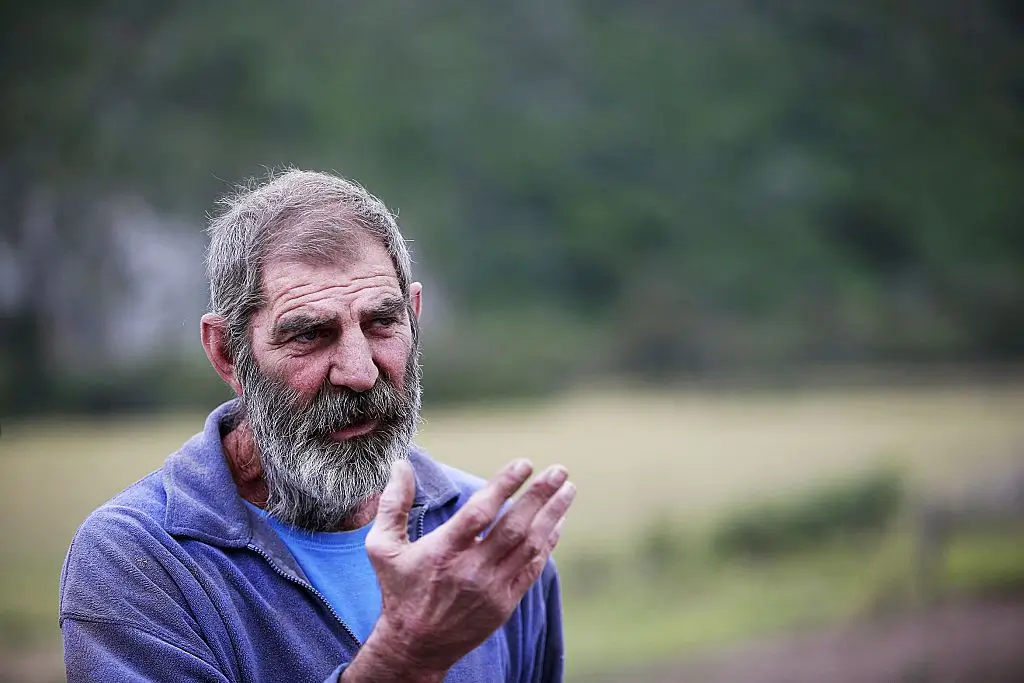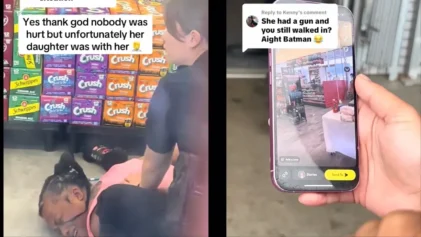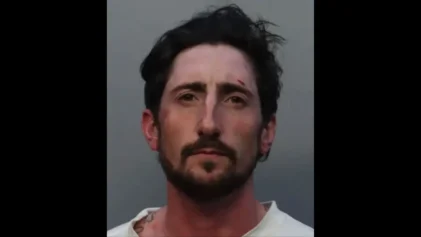A former white security guard in South Africa who admitted to killing dozens of Black citizens during the apartheid era has died after claiming to BBC News that police officials were complicit in his murderous reign of terror.
In a series of chilling interviews with the British network a week before his death, Louis Van Schoor, 72, revealed that law enforcement figures were deeply involved in his crimes and should share the blame for 39 slayings he admitted to carrying out when he worked as a security guard in the late 1980s.
Van Schoor died of sepsis, which emerged from an infection in his leg.
Although Van Schoor is gone, family members of his victims are still demanding justice. “He got off easy!” said Marlene Mvumbi, whose brother was among the victims. “I hope they still re-open these cases. The families deserve justice. We got nothing, and the pain is still the same.”

All of his victims were Black.
Van Schoor did not provide names in the report, and there was no immediate confirmation of his claims about the involvement of South African Police officers — who, during apartheid, were notorious for their brutal tactics in suppressing activism and enforcing racial segregation.
Despite admitting to at least 39 killings, Van Schoor was only convicted of seven murders and sentenced to more than 90 years in prison. However, the judge allowed the sentences to be served concurrently, leading to his early release on parole in 2004 after serving just 12 years.
The network’s investigation into Van Schoor tried to get to the bottom of why authorities have yet to explain the failure to reassess the killings in the post-apartheid era.
During the sit-down with BBC, the former police officer insisted he never set out “with the intention of killing Black people” and denied being racist, though he admitted that he found the act of stalking Black people “exciting.”
Before becoming a security guard in 1986, Van Schoor spent 12 years with the East London police force, where he worked with “attack dogs” to track and apprehend mostly Black protesters and criminals. He likened his work to “hunting, but a different species,” the BBC reported.
Van Schoor was once a towering and brutish man, but during his final years, he was confined to a wheelchair because of two amputated legs — a mere shadow of the ruthless figure he once was 40 years ago, when he was known as the “Apartheid Killer.”
Over time, though, Van Schoor became a hobo-like figure, old and frail, slumped over with a scruffy gray beard — unapproachable, alone, and no friends to speak of.
Many of his teeth rotted and fell out years ago, while his face was creased with wrinkles from years of chain smoking and sleepless nights.
A heart attack had also taken its toll in recent years.
However, unlike many of the people he shot, Van Schoor remained alive and breathing decades after his crimes.
He wore rumpled attire during his talks with the BBC.
His home reeked of cigarettes — his final days were spent in deteriorating health, which some called a fitting end for a man with such a dark past.
While speaking to the BBC, Van Schoor tried to lighten the mood at one point by making an awkward joke about his choice to stay awake during the surgery to remove his legs, rather than accepting anesthesia — bragging in a way about his toughness.
“I was curious,” he chuckled. “I saw them cutting … they sawed through the bone.”
His voice trailed off with a grin. No one else thought it was funny.
Van Schoor’s face turned serious again when he tried to make the case to BBC reporter Charlie Northcott that he is “not the monster that people say I am.”
Louis Van Schoor’s killing spree during the 1980s claimed 39 lives over three years, all while South Africa’s brutal apartheid regime enforced a racial hierarchy that brutally oppressed Black people for the benefit of whites.
The numerous murders committed by Van Schoor would place him in company with some of America’s most notorious serial killers, including Ted Bundy, John Wayne Gacy, and Gary Ridgeway, aka the Green River killer — all of whom were responsible for at least 30 murders.
The only distinct difference is that every one of Van Schoor’s victims was Black, the youngest just 12 years old.
The murders unfolded in the harsh, windswept city of East London, a once-poor area nestled in the Eastern Cape, where many of the residents lived in shanties.
While working as a security guard for more than 70 percent of the city’s white-owned businesses, including restaurants, shops, factories, and schools, Van Schoor had the perfect cover to murder with impunity in the name of preserving a racist system.
“He was a kind of vigilante killer. He was a Dirty Harry character,” says Isa Jacobson, a South African journalist and filmmaker who has spent 20 years investigating Van Schoor’s crimes.
When he was finally apprehended, Van Schoor claimed that each person he killed was a “criminal” who he caught in the act of burglary.
“These were intruders who were, in a lot of cases, pretty desperate. Digging through bins, maybe stealing some food… petty criminals,” he said unremorsefully during the interview.
He never acknowledged that, under South African law at the time, crimes of this nature were not punishable by death.
Van Schoor said he would sometimes carry out multiple killings in a single night, spreading terror through the Black community of East London. Rumors circulated about a bearded man, dubbed “Whiskers” in Xhosa, who made people disappear after dark. Yet, his murders were not carried out in secrecy.
Between 1986 and 1989, Van Schoor reported each killing to the police himself.
However, Nelson Mandela’s release in 1990 marked the beginning of significant change in South Africa, leading to the end of apartheid and a transition to democracy.
Pressure from activists and journalists led to Van Schoor’s arrest in 1991.
Van Schoor’s trial, which involved numerous witnesses and extensive forensic evidence, faltered due to the lingering influence of the apartheid system in the judiciary.
The police still classify Van Schoor’s other 32 killings as “justifiable homicides” due to apartheid-era laws that allowed lethal force against resisting or fleeing intruders. Van Schoor used this defense to assert his innocence, claiming his victims were trying to escape when he shot them.
The BBC’s investigation, led by Jacobson, examined old police reports, autopsies, and witness statements to challenge Van Schoor’s “justifiable” shootings. Jacobson spent years digging through scattered and hidden files across Eastern Cape cities to uncover the truth.
“The whole scale of it is just mesmerizing,” Jacobson told the BBC. “It’s astounding that any court of law could allow this to happen.”
Among the most shocking pieces of evidence uncovered by Jacobson were survivor testimonies that contradicted Van Schoor’s claims. Injured victims described being shot while their hands were raised in surrender or being taunted by Van Schoor before being shot. One survivor recounted begging for water after being shot, only to be kicked in his wound by Van Schoor.
His weapon of choice was a 9mm semi-automatic pistol, frequently loaded with hollow-point bullets to cause severe damage to his victims. In one instance, he fired eight shots into an unarmed man.
In another case where the victim survived, Van Schoor shot a 14-year-old boy who had broken into a restaurant for loose change. The boy said he hid in the restroom when he saw Van Schoor but came out when a security guard cornered him and told him to stand by a wall before shooting him multiple times.
“He told me to stand up, but I couldn’t,” the teen said in his recorded testimony, according to BBC. “While I was lying there, he kicked me in the mouth. He picked me up and propped me up against a table, and then he shot me again.”
Despite his account, the boy’s claims were dismissed, and he was charged with breaking and entering. Many other young Black men and boys who reported being assaulted and shot by Van Schoor faced similar skepticism.
Incredibly, the judge presiding over Van Schoor’s trial dismissed the damaging testimony, calling the witnesses “unsophisticated” and “unreliable.” In South Africa, there are no juries, so the judge’s decision was final.
Van Schoor’s trial was deeply divisive, with many in the white community of East London backing him and even promoting him with bumper stickers that featured his image and the slogan “I Love Louis” surrounded by bullet holes.
The police could reopen Van Schoor’s case and review his so-called “justifiable” shootings anytime, as there is no time limit for prosecuting murder or attempted murder under South African law.
“Louis Van Schoor was basically going out and murdering people for sport,” said Dominic Jones, a journalist who helped raise awareness about the corrupt guard at the time of the killing spree.
Van Schoor was a sophisticated angel of death — he had it set up where he would get alerts whenever a silent alarm was triggered at the businesses he protected, showing him the exact location of the intruder, which allowed him to confront them alone.
“I was barefoot. It’s quiet. You don’t have your shoes squeaking on tiles and stuff,” he said.
At the shooting scenes, Van Schoor used the night to his advantage, sneaking up on his victims from the shadows, avoiding lights and navigating the darkness by relying on his sense of smell.
“If somebody breaks in, the adrenaline gives off an odor. And you can pick that up,” he told the network.


